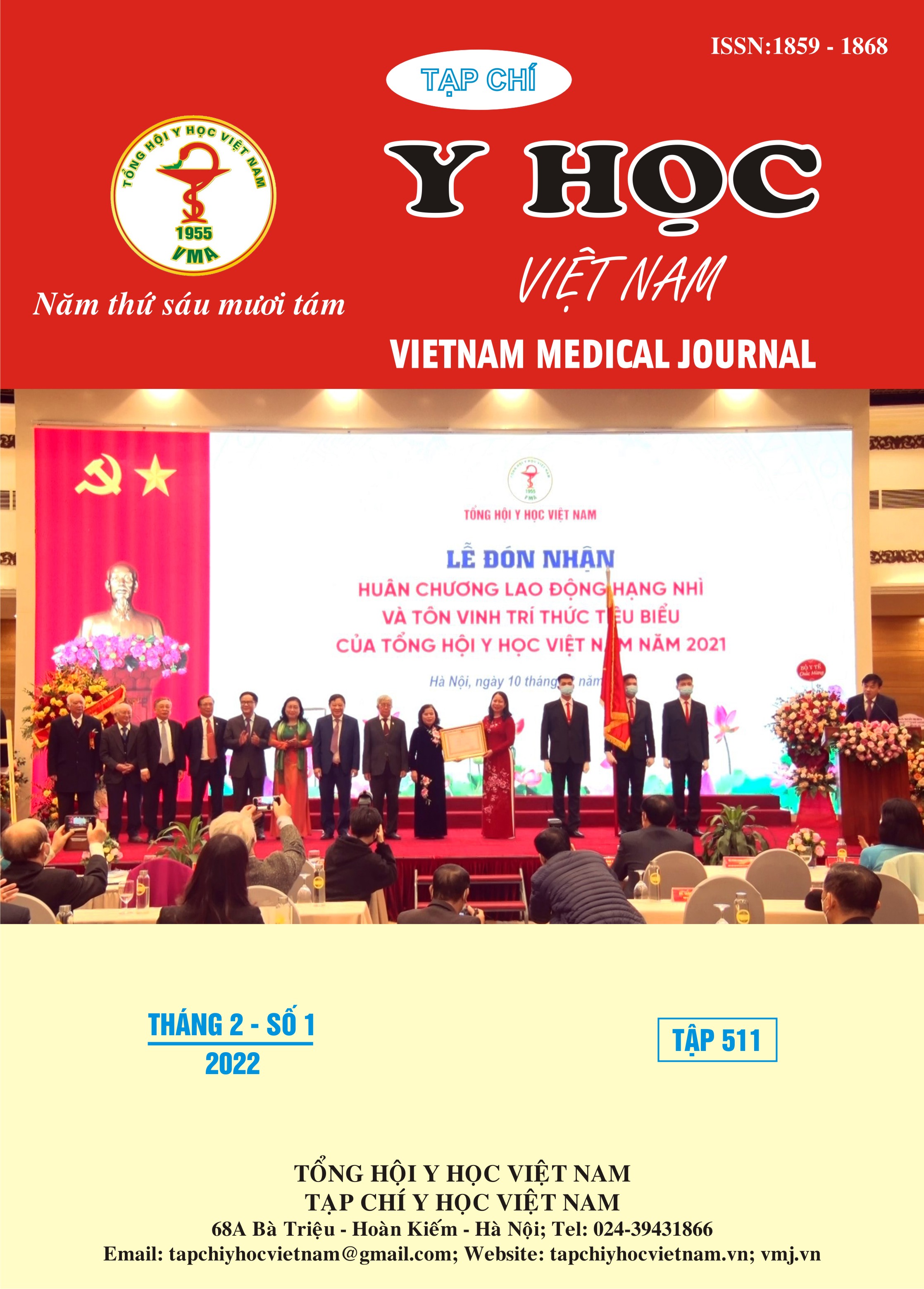ANALYSIS OF THE USE AND THERAPEUTIC MONITORING OF VANCOMYCIN IN ADULT PATIENTS IN HAI PHONG INTERNATIONAL HOSPITAL
Main Article Content
Abstract
This study aimed to describe the use of vancomycin on adult patients and the routine therapeutic drug monitoring (TDM) activity in Haiphong International Hospital according to the institutional approved guideline. Information of vancomycin use and TDM of 142 admitted patients from 2019 to 2020 were retrospectively reviewed. The patients median age was 51 years [IQR: 34 – 67]. Renal function fluctuated substantially with median Clcr was 83.8 mL/min [IQR: 62.8-110.8]. The most common isolated pathogen was MRSA (n = 88; 77.2%). Loading dose was observed in 40.2% of patients receiving intermittent infusions with a median of 28.8 mg/kg and in 80% of patients receiving continuous infusions with a median of 27.3 mg/kg. Among patients receiving intermittent infusions, a total maintenance dose at 2g or 3g over 24h was used on patients with different renal function. The vancomycin trough concentrations showed a high inter-individual variation. Dose adjustment increased vancomycin levels but not significantly from 10.9 mg/L to 14.1 mg/L, p = 0.554 with intermittent infusion and from 21.7 mg/L to 23.9 mg/L, p=0.312 with continuous infusion. The target concentration attainment was improved after 1st and 2nd dose adjustment from 40.9% to 49.6% in intermittent infusion and from 40.0 % to 53.3% in continuous infusion. These findings emphasize the necessity of TDM vancomycin in individualizing the vancomycin use to maximize the efficacy while avoiding the toxicity.
Article Details
Keywords
vancomycin, therapeutic drug monitoring (TDM), Haiphong International Hospital
References
2. Lê Vân Anh, Thử nghiệm can thiệp của dược sỹ lâm sàng vào việc sử dụng vancomycin nhằm đảm bảo hiệu quả và an toàn trong điều trị tại bệnh viện Bạch Mai. Trường Đại học Dược Hà Nội, Luận án tiến sĩ Dược học. 2015.
3. Nguyễn Gia Bình, Đào Xuân Cơ, Trần Duy Anh, Phân tích khả năng đạt nồng độ thuốc đích trên bệnh nhân Hồi sức tích cực sử dụng phác đồ vancomycin truyền tĩnh mạch liên tục, hiệu chỉnh liều dựa trên giám sát nồng độ thuốc. Tạp chí Y học Việt Nam, 2017. 461(s2-t12): p. 34-38.
4. Lưu Thị Thu Trang, Phân tích đặc điểm sử dụng vancomycin trong điều trị nhiễm khuẩn huyết tại trung tâm bệnh nhiệt đới, bệnh viện Bạch Mai. 2020.
5. Trần Ngọc Phương Minh, Đặng Nguyễn Đoan Trang, Đánh giá hiệu quả của việc áp dụng hướng dẫn theo dõi nồng độ vancomycin trong trị liệu tại Bệnh viện Đại học Y dược Thành phố Hồ Chí Minh. Tạp chí Nghiên cứu Dược và Thông tin thuốc, 2019. 10(3): p. 30-37.
6. Wong, S.S., et al., Bacteremia due to Staphylococcus aureus with reduced susceptibility to vancomycin. Diagn Microbiol Infect Dis, 2000. 36(4): p. 261-8.
7. Rybak, M.J., et al., Vancomycin Therapeutic Guidelines: A Summary of Consensus Recommendations from the Infectious Diseases Society of America, the American Society of Health-System Pharmacists, and the Society of Infectious Diseases Pharmacists. Clinical Infectious Diseases, 2009. 49(3): p. 325-327.
8. Mahi-Birjand, M., et al., Evaluation of vancomycin use in university-affiliated hospitals in Southern Khorasan Province (East Iran) based on HICPAC guidelines. Drug Healthc Patient Saf, 2019. 11: p. 29-35.
9. Giuliano, C., K.K. Haase, and R. Hall, Use of vancomycin pharmacokinetic-pharmacodynamic properties in the treatment of MRSA infections. Expert Rev Anti Infect Ther, 2010. 8(1): p. 95-106.


